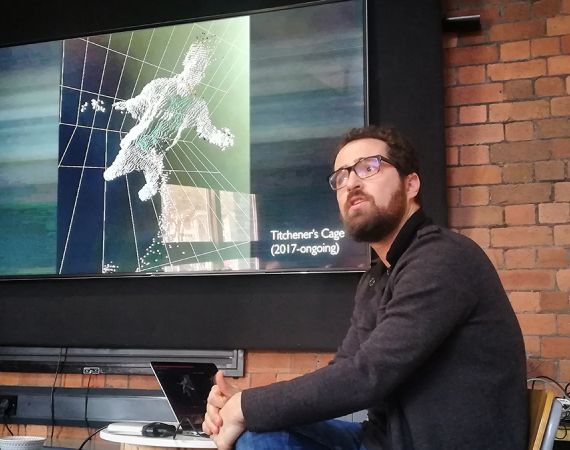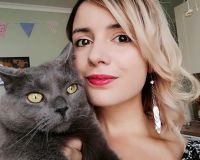Lunchtime talk write-up
Posted on Wed 11 Jul 2018
i-docs 2018
Nadav Assor was a keynote speaker and exhibitor at this year’s i-docs. We were very lucky to be joined by him for this week’s Lunchtime Talk.

Posted by
Nadav Assor was a keynote speaker and exhibitor at this year’s i-docs. We were very lucky to be joined by him for this week’s Lunchtime Talk.
Five Things I Learned:
1. Nadav is interested in three themes that are commonly associated with interactive documentary; mediation, embodiment and interaction. Nadav became intrigued by the possibilities of interactive documentaries, because he wanted to make image and audio-visual work that is driven by the body and how it moves through space.
2. Nadav believes that you can’t separate the body from art. We experience everything through the body, including processes, movement and relationships between bodies. Nadav shared some earlier works, a series of clips of seeing in the most direct way, using an eye tracking technology. These cameras are developed for very corporate sales purposes, but Nadav used it to create an organic lens - an eye that is the camera.
3. Feelers is an improvised non-fiction piece on that explores mediation through two people’s bodies. They are strangers to each other, one a healer the other a prison guard who talk in turn about the body in relation to their professions while examining each other’s bodies through touch and observation. Nadav appropriated military eye tracking camera technology to film what they are seeing through the reflections in their eyes. What are the parallels and differences between bodily therapy and a body search?
4. Lessons on Leaving Your Body 2014 was a film made in collaboration with Jake Wells using a FPV drone, which uses a head mounted display to allow Jake to view what the drone is seeing in real time while he’s flying it. Nadav noticed that drones often get angelic names, or names of Gods. The film explores the connection between drone technology, personal circumstances in Wells’ life and Religion.
5. Nava presented Titchener’s Cage at Arnolfini at this year’s i-docs Symposium. It is a mixed-reality piece that invites people to interact with traces of previous participants. Nadav travels with this piece from city to city and records people each time he exhibits it using volumetric capture, adding to the archive of ‘ghosts’ the user can interact with. During the piece, you are given the option to float out of your own body by hitting a button. Nadav is looking at new ways of building on this idea, like creating layered ways of active listening, exploring two-way communication and using multiple nodes.
